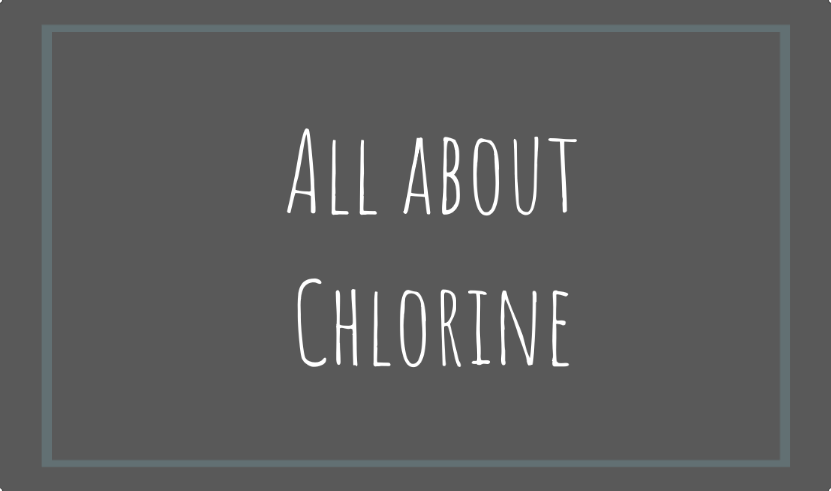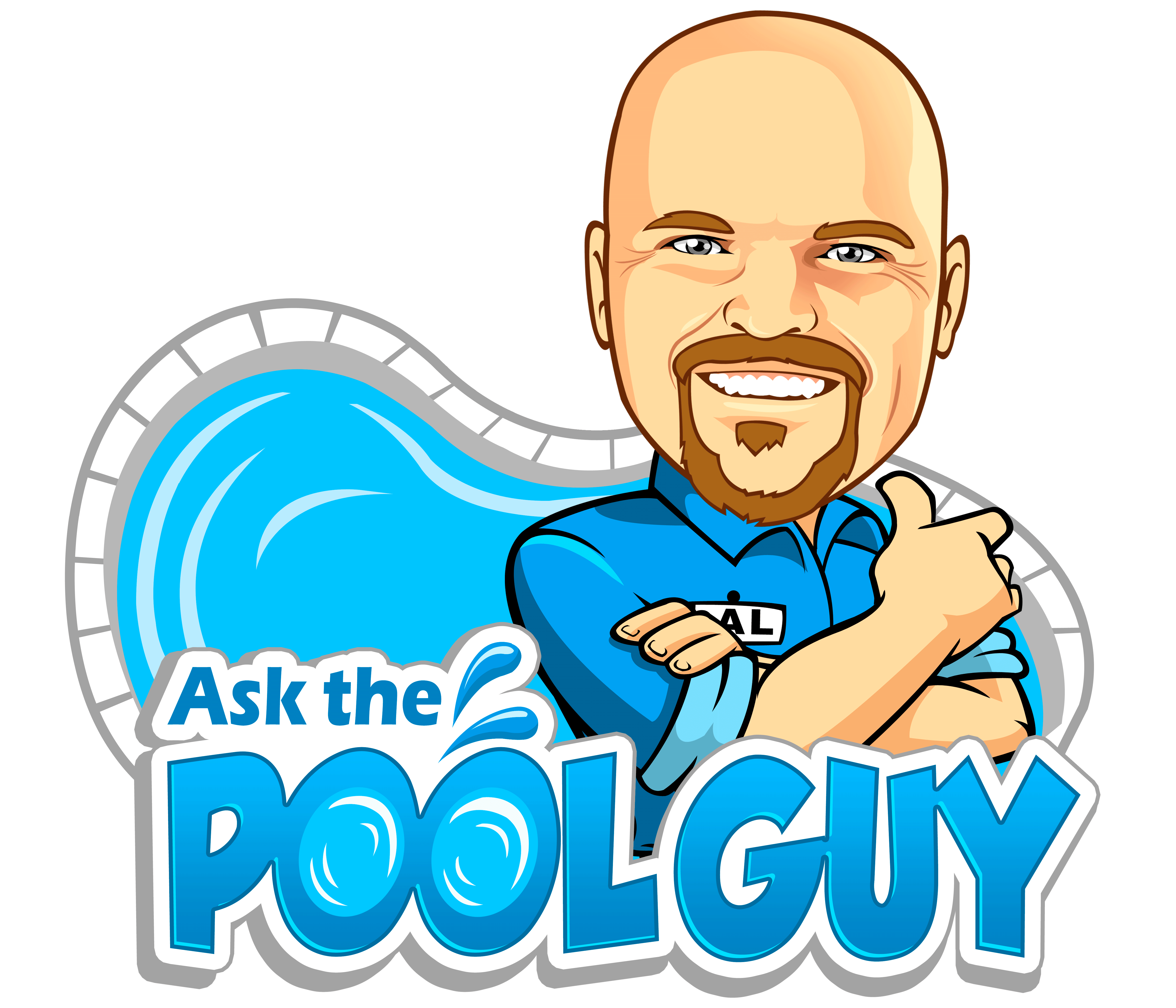
To be able to swim safely, chlorine is used to kill off the bacteria and to control the algae in your pool water. It also chemically destroys other inorganic materials. When any type of chlorine is added to water, an acid called Hypochlorous acid is formed. It is actually the Hypochlorous acid that is disinfecting and oxidizing the pool water.
Hypochlorous acid (HOCl)
- HOCl and OCl– make up free chlorine
- HOCl is a much more potent disinfectant than OCl–
- Free chlorine’s effectiveness as a sanitizer/oxidizer is solely pH-dependent
- At the lower end of the acceptable pH range of 7.2, nearly 67% of free chlorine is in the form of HOCl
- At the 7.8 level, it drops to almost 33%
- At a pH of 7.5, HOCl is 50%
Chlorine comes in many different types (chlorine compounds) and many physical forms including 3 or 1-inch tablets, liquid, sticks, bottles, or in granules. You can also produce chlorine in your pool through the use of a chlorine generator/salt system.
Types of Chlorine Compounds:
liquid – sodium hypochlorite
- very alkaline with a pH of 11-13
- provides 10-12% available chlorine content
- easy to handle in gallon jugs – but splashes will bleach your clothing
- never store near a stabilized chlorine as a spontaneous combustion can occur
lithium hypochlorite (a fast-dissolving granule)
- Pros: Can be stored for a long period of time and retain it’s potency
- Relatively safe to handle
- doesn’t add calcium/hardness to the water
- does raise TDS more than other forms
- more expensive than other forms
- provides 35% available chlorine content
- very alkaline with a pH around 11, may drive up pH and alkalinity in the water
calcium hypochlorite also called cal hypo
- adds calcium/hardness to water
- pH may range from 8.5 to over 11
- slow dissolving granules can (will) discolor pool surfaces
- highly flammable
- available chlorine content of 45-75
dichlor (the chlorinated isocyanurate, sodium dichloro-s-triazinetrione)
- most pH neutral at 6.7
- granular – easy to broadcast on water surface
- dissolves quickly
- good shelf flife
- provides 63% available chllorine content
- con: this is stabilized chlorine and will contribute to build up of cyanuric acid, every 1lb of dichlor adds 5ppm of CYA for every 10,000 gallons of water
trichlor – Trichloro-s-triazinetrione
- sanitizer and stabilizer in one
- very acidic with a pH of 2.8-3.5 will lower pH and alkalinity which will affect metal in the pool, especially heaters
Liquid Chlorine is the best choice for fast acting results. It is less stable than tablets which often have stabilizer added to reduce the sun’s effect on the chlorine.
Sunlight
One ppm of unstabilized chlorine will dissipate in 15 minutes of direct sunlight. If the water is warmer than 75 degrees this dissipation rate is even faster.
If you have a pool turning cloudy and green, and liquid chlorine is available in your state (some states transportation laws prevent liquid chlorine from being available), shocking your pool with a gallon or two will usually do the trick. For steady doses and continual sanitizing of your pool, keep reading.
The most common and least expensive form of chlorine are the 3-inch tablets because they are slow to dissolve and require little maintenance. Chlorine sticks dissolve even slower than the 3-inch tablets but are not as common. A concentration of about 90% Trichloro-S-Triazinetrione is ideal. These two types of chlorine are best suited for in-ground pools.
Granular chlorine works just as well as the above mentioned, but you must always dissolve inorganic chlorine such as granules, in a bucket of water first before adding to the pool. Granular chlorine should have a 56% – 62% concentration of Sodium Dichloro-S-Triazinetrione. This type of chlorine must be added to the pool almost daily and have daily testing.
1-inch tablets are best suited for above ground pools, smaller in-ground pools, and spas.
Purchasing:
TIP: Be sure to purchase your tablets or sticks from a pool supply store. You may find chlorine tablets and sticks cheaper at a “big box” chain, but the quality goes way down. There will be filler agents and they will dissolve and crumble much faster.
Once you have the correct chlorine for your pool, you will need to add it to the pool water. Automatic chlorine feeders or floating feeders make for much less maintenance. They slowly dissolve the chlorine tablets or sticks and disperse the proper amount of chlorine needed for your pool. If the feeder is adjusted correctly, you should be able to go a week or more before checking your feeder.
If using granular products, they must be pre-dissolved in a bucket of water first. NOTE: Be sure to fill the bucket with water first, before adding the granules to avoid splashing or harm. You can then pour the bucket around the perimeter of the pool focusing the majority towards the deep end.
————–
Chloramines
Chloramines are noticeable to bathers at levels as low as 0.2 ppm and must be eliminated by superchlorinating to “breakpoint” when they reach 0.5 ppm or sooner
SUPERCHLORINATION or “Shocking”
Perspiration and urine in a pool causes ammonia (a source of nitrogen). This nitrogen will react to the chorine to form chloramines (combined chlorine). When the chloramines are high, the swimmer will have irritation to the eyes and the chlorine will smell very strong. You may think that there is too much chlorine in the pool, when actually the opposite is true. The pool needs to be “shocked” by raising the chlorine residual by 5 to 10 times the normal level. Depending on the level of activity in your pool, “shocking” will be done once a week to once every couple of weeks.
———–
pH Level
pH is a measure of the acidity or alkalinity in a solution. Solutions with a pH of less than 7 are acidic and solutions greater than 7 are basic or alkaline. A pH of 7 is pure water also called neutral. Use a drop-type test kit over a test strip. Results are more accurate.
The ability of chlorine to do its job correctly depends on the pH. The recommended range is 7.2-7.6. As the pH raises above 8, cloudy water may occur. As the pH level lowers to below 7, the level of acidity increases which then causes irritation to the eyes and can also corrode the metal pool components.
To lower the pH, muriatic acid must be added. Use caution and add a small amount of the acid to a full bucket of water before adding it to the deep end of the pool. The pool water should be circulating. Wait 6 hours and retest.
To raise the pH, soda ash (sodium carbonate) must be added. When the pool water is below the recommended level of 80-120 ppm, you will need to add the soda to increase the alkalinity. The formula of 1 1/2 pounds of sodium carbonate will raise 10,000 gallons of pool water 10 ppm.
Test your water 1-2 times per week to ensure a good, easy, low-maintenance swimming season. Your free available chlorine (FAC) should be at a level of 1-3 at all times.
——-
Cyanuric Acid
Cyanuric acid is a stabilizing ingredient that prevents the chlorine from being damaged by the sun. The level of cyanuric acid should be measured periodically with a test kit. The recommended level is 20-40ppm. If the levels are too high, the chlorine will lose its sanitizing ability. If the level is over 100ppm, you must remove a portion of the pool water and add fresh water. There is no other way to lower the cyanuric acid level. Chlorine tablets and granular form are stabilized chlorine and will contain high amounts of the acid.
Random Fact:
an adult bather sheds about a billion bacteria when entering a spa (eew!)

